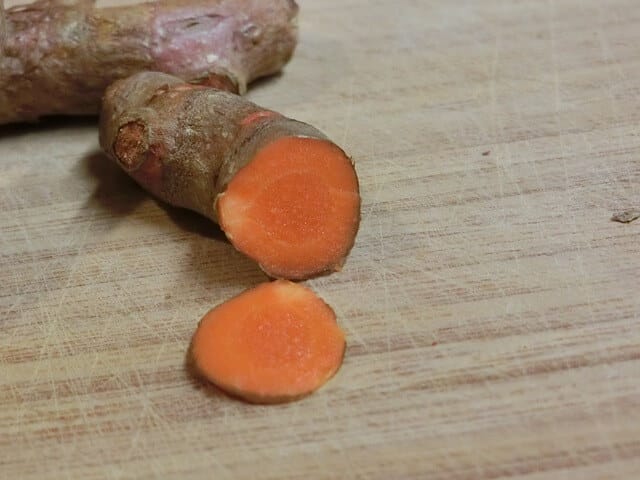I have been growing turmeric (Curcuma longa) here in North San Diego county and frequently include the root in my cooking. When I think of Indian meals, I think of the yellow-gold tinted meals containing ample amounts turmeric root. I hope you consider as well this inexpensive spice that is quite valuable therapeutically.
Turmeric root (Curcuma longa) has a diverse array of intracellular targets throughout the body giving it great therapeutic potential. One area of particular interest is turmeric’s interaction with the inflammatory pathways of the human body. Chronic inflammation has been linked to issues of the brain, cardiovascular, nervous, endocrine systems, and musculo-skeletal systems.
The uses of turmeric as a therapeutic agent for healthy tissue, including but not limited to joint, muscle, and connective tissue functionsare linked to the polyphenols compounds known as Curcuminoids. Curcuminoids have been well studied for their synergistic effects as inhibitors of at least four inflammatory compounds in the body (, including NF-kB, COX-2, TNFa, and IL-6).
Regulating and modulating these pro-inflammatory compounds balances inflammatory pathways, impacting inflammatory load that harm tissues throughout your body. Turmeric’s polyphenols are strong antioxidants acting as free-radical scavengers, supporting several important liver enzymes of detoxification, and supporting S.O.D. anti-oxidant function. S.O.D. is only one of two anti-oxidants your body is capable of manufacturing. S.O.D. counteracts the most dangerous free radical (oxidant) in your body — the irregular oxygen free radical. Similarly, turmeric supports Reactive Oxygen Species function.
Studies suggest that combining turmeric with other high polyphenol plants and compounds improves the absorption and effectiveness of turmeric root compounds! Synergy amongst plants and plant compounds, such as with the curcumin polyphenols, can enhance the action of an herbal formula targeting multiple mechanisms of action and specific tissues.
For example,a combination of turmeric with rosemary, ginger root, devil’s claw root, boswellia, wild lettuce, Jamaican dogwood, feverfew leaf and flower, the bioflavonoids quercetin and rutin, hyaluronic acid, trans resveratrol, and formaldehyde-free black pepper to focus on targeting the multiple aspects of joint health including – modulating inflammation, supporting circulation and vascular health, addressing tissue compromise throughout your body, andmodulating the mechanisms of occasional pain would be an example of a synergistic combination.
Using turmeric root as a whole plant extract and in formulation with other herbs captures the synergy and the diverse array of molecular and tissue target that supports the great therapeutic potential of this medicinal plant.

